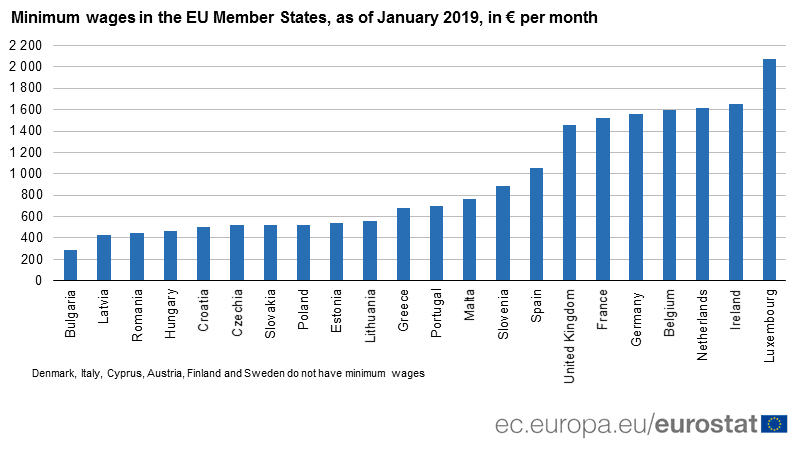According to a recent Eurostat ranking of the minimum wage across EU member states, the Czech Republic has the sixth-lowest minimum wage in member states with a minimum wage.
The Czech government recently approved a 1,200-CZK minimum-wage increase for 2019.
PARTNER ARTICLE
Ten member states all located in the east have a minimum wage of under €600 — Bulgaria had the lowest gross (before taxes) minimum wage (€286) across the EU.
Nine other member states, all located in the east of the EU, followed with minimum wages between €400-€600 per month: Latvia (€430), Romania (€446), Hungary (€464), Croatia (€506), the Czech Republic (€519), Slovakia (€520), Poland (€523), Estonia (€540), and Lithuania (€555).
Are you on the market for a new job in the Prague? Search 1000s of the latest vacancies at the Expats.cz Job Server
In the Czech Republic, that amount represents roughly 13,350 CZK per month.

In five other member states, located in the southern part of the Continent, minimum wages ranged between €650 and just over €1,000 per month: Greece (€684), Portugal (€700), Malta (€762), Slovenia (€887), and Spain (€1,050).
In the remaining seven member states, all located in the west and north of the EU, minimum wages reached above €1,450 per month: the United Kingdom (€1,453), France (€1,521), Germany (€1,557), Belgium (€1,594), the Netherlands (€1,616), Ireland (€1,656), and Luxembourg (€2,071).
For comparison, the federal minimum wage in the United States was €1,098 ($1,257) per month in January 2019.
The figures represented a disparity in minimum wage across the 22 member states; the highest minimum wage in the EU was more than seven times higher than the lowest.
However, the disparities in minimum wages across the EU Member States are considerably smaller after price level differences are eliminated: minimum wages in the member states with lower price levels become relatively higher when expressed in purchasing power standard (PPS), and relatively lower in the member states with higher price levels.
Source: Eurostat
Looking for a job in Prague? Browse through thousands of the latest open job vacancies in Prague and the Czech Republic from our trusted partners at Expats.cz Jobs.












 Reading time: 1 minute
Reading time: 1 minute 


















